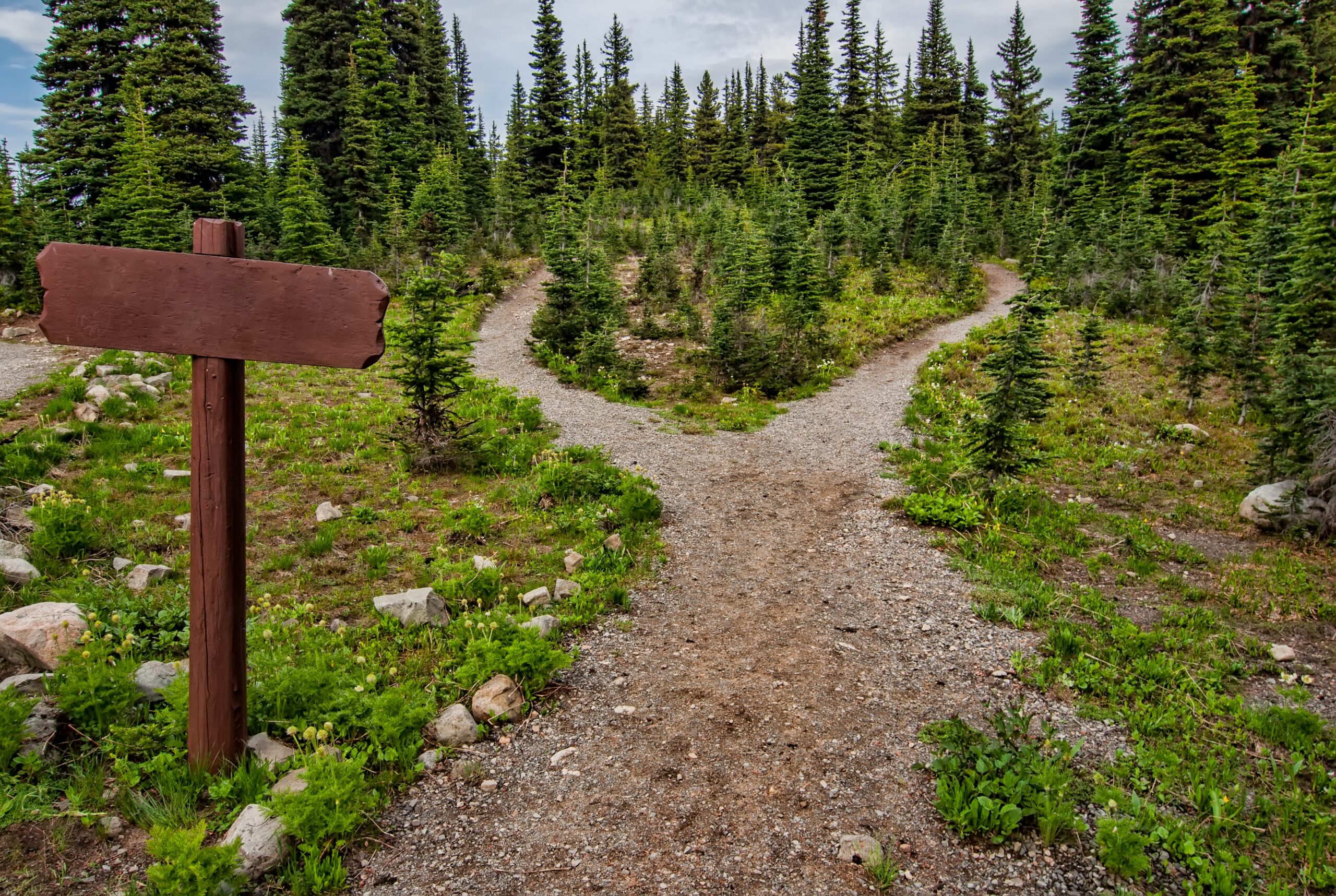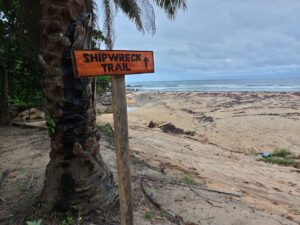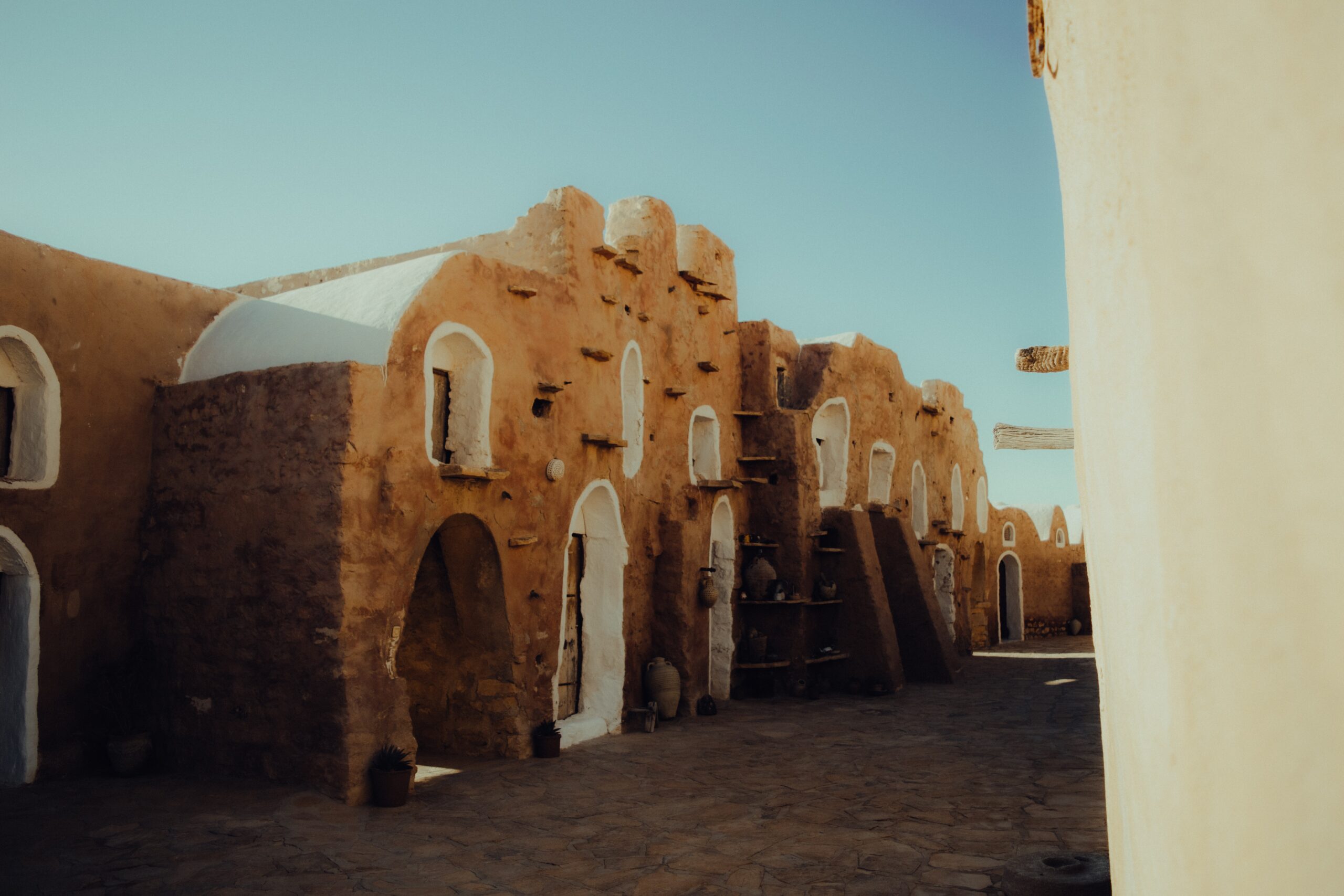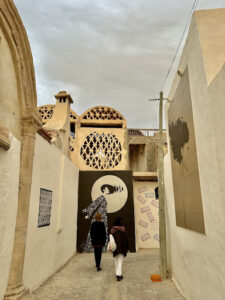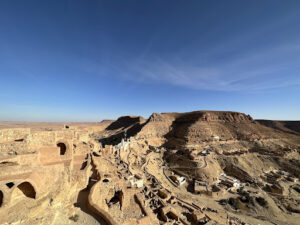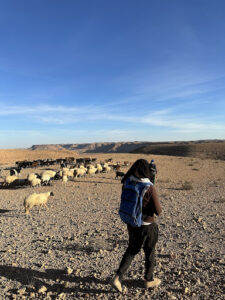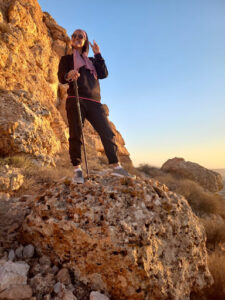Trails are defined generally as marked paths. With such a simple definition, trails can come in many forms, such as walking trails, biking trails, hiking trails, and multi-use trails. A trail can be a short walking path that connects a community or a hike to the summit of a mountain. For example, the Lewis and Clark National Historic Trail is a driving route of connected towns, metropolises, national parks, natural areas, and historic sites that span more than 4900 miles!
While other forms of tourism engage the traveler with another area’s social, historical, and cultural elements, trail tourism is a form of “slow tourism.” It encourages the traveler to actively engage and experience the land itself that they are visiting. Slowing down in our fast-paced society is what makes trails so rewarding and worth experiencing. These locations draw tourists to see beautiful areas and landscapes in person. Trail tourism also provides many benefits, such as protecting the environment, boosting the economy, and preserving the culture of the surrounding community.
Environmental and Social Benefits of Trails
As trails come in many forms, walking or biking trails that run through towns can serve as valuable forms of eco-friendly transportation. In fact, trails also come with many environmental benefits. According to the Connecticut Department of Energy and Environmental Protection, trails:
- Reduce air pollution by providing a cleaner form of transportation.
- Reduce road runoff and soil erosion
- Reduce flooding
Utilizing walking and biking trails also greatly benefits the trailgoer in the form of public health. The Rails to Trails Conservancy published a report in 2019 that showed the use of trails successfully connects residents to their destinations by walking or biking, which reduces health problems and consequently reduces the cost of health care.
Economic Benefits of Trails
Trails also stimulate the economies of surrounding communities. As tourists come to experience the trail, they also bring money into the area. According to the Institute for Tourism and Recreation Research, during the summer of 2017, visitors to Mt. Helena who used the trail system brought over $4 million into the area.
In 2013, the Outdoor Industry Association published a study that found that trailgoers spent an average of roughly $60 for one one-day trip, while bikers spent roughly $43 for one day trip. The Outdoor Industry Association also estimated that trail-based recreation generated
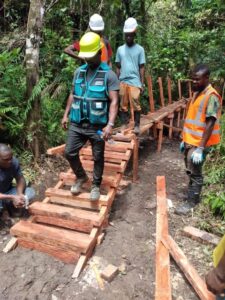
a total of $353,489 spent in Connecticut, and bicycle-based recreation resulted in $704,067 of spending.
As trails support the development of an area’s environment and economy, they are a great way to revitalize depressed towns. A conservation organization funded by the Pennsylvania Department of Conservation and Natural Resources called WePreservePA found that trails attract businesses because they beautify the town or city. Trails were also a significant factor in a homebuyer’s decision to move to a town. This means that the development of trails can not only bring in money through attracting visitors and improving the environment and the health of those already living in the area, trails also attract new businesses and new residents!
There are several examples of the many benefits of trail development, such as the Camino de Santiago, the Lewis and Clark National Trail, and the trails in Liberia.
1. Camino de Santiago
The Camino de Santiago, also known as the Way of Saint James, is a historic pilgrimage route with deep cultural and spiritual significance. Stretching across various paths that converge towards Santiago de Compostela in northwest Spain, the Camino has drawn pilgrims for centuries. Its origins can be traced back to the medieval times when it was believed that the remains of Saint James the Apostle were interred at the city’s cathedral. Today, people from around the world embark on this journey for a myriad of reasons—spiritual reflection, personal growth, adventure, or cultural exploration. The Camino offers a unique experience of walking through picturesque landscapes, quaint villages, and historical sites, all while fostering a sense of community among pilgrims from diverse backgrounds.
The Camino de Santiago radiates economic benefits across the regions it traverses. This historic and spiritual pilgrimage route draws diverse travelers from around the world, stimulating local economies by generating demand for various goods and services. This includes accommodation, food, transportation, and souvenirs. The hospitality industry witnessed a significant upswing as hotels, hostels, and guesthouses accommodate the pilgrims. Local restaurants and cafes experience heightened patronage, offering traditional cuisine and nourishment to weary travelers. Moreover, transportation services such as buses and taxis thrive as pilgrims navigate different segments of the route. The pilgrimage also fosters cultural and heritage tourism, leading to visits to historic sites, museums, and local attractions, thereby injecting life into local economies. The rejuvenation of historic religious buildings along the route preserves cultural heritage and generates employment opportunities through restoration and maintenance projects. In essence, the Camino de Santiago catalyzes economic vitality, breathing life into the communities that line its path.
According to the Economic Analysis and Modeling Group, travelers of the Camino provide the same economic impact as 2.3 domestic visitors despite only making up 2.3% of total tourist expenditure. While exact numbers are difficult to pin down due to the number of trails considered part of the Camino and the sheer number of visitors every year, according to an analysis referenced by the Milken Institute Review, visitors to the Camino increased the economy of local communities by roughly one-fifth.
Lewis and Clark National Historic Trail
When looking at the impact that trails have in connecting communities and enhancing development, the Lewis and Clark National Historic Trail (LCNHT) is a perfect domestic example. Following the steps of North American pioneers’ journey towards the West, the trail crosses a total of 16 state lines covering around 4,900 miles of distance, making it the longest official trail in the United States.
The LCNHT has the particularity of not being a traditionally marked trail with a clearly defined itinerary. The Lewis and Clark expedition of the early 19th century covered so much ground from Pittsburgh all the way to the Pacific Ocean that the modern itinerary is approximative. This loosely defined trail includes even more alternatives to the tourism experience.
The absence of official physical trail results in many communities and businesses being unaware or simply undiscovered of some of the itineraries previously recommended online. Since 2016, Solimar International has worked with the National Park Service and partnered with the Lewis and Clark Foundation, the Lewis and Clark Trust, and various individual counties to include and connect as many experiences as possible along the trail.
A traveler-focused LCNHT website now serves as a platform for over 1,500 businesses that lie along the trail. An interactive map serves as a source of reference that connects various experiences ranging from immersion in Indian reservations to small history museums that commemorate the history of America’s earliest explorers.
On top of the economic growth that stems from heightened tourist exposure, developing such an extensive network for the trail was a golden opportunity to tell the stories of communities that had previously not been included. Beyond the physical trail, it was key to provide a platform to link the thousands of people who now live and embody the landscapes that Lewis and Clark once discovered on their trailblazing journey, which changed the course of US history.
Indigenous Voices
The LCNHT goes through 15 Native American reservations, giving many tribes the opportunity to offer access to their interpretation of history and their own cultural context as it pertains to their land. As Lewis and Clark traversed West, Native American tribes were key to the success of their expedition. The two explorers often sought to find tribes to trade goods and equipment necessary for the trip, which naturally makes the interpretive history of the concerned Indian reservations a key factor to fully understanding the story. When Solimar International first started working with LCNHT, there was much less content available to tourists. Local businesses that may have been overlooked in the past have a unique opportunity to be showcased through the website’s inclusion of the various cultural centers on the trail and be listed as local guides. It’s important to intertwine indigenous history with the history of the Lewis and Clark Expedition.
Liberia Trail Development
The country of Liberia is home to half of the remaining rainforest in West Africa. Until recently, the beauty of Liberia was hard to fully appreciate as it lacked a proper trail system. Constructing well-intentioned trails in Liberia’s rainforests holds the potential for significant benefits. These pathways could bolster ecotourism, allowing visitors to experience the rainforest’s biodiversity and contribute to local economies. These designated trails would minimize ecological impact, safeguarding the fragile ecosystem. Moreover, these routes could serve as educational resources, heightening awareness about rainforest conservation and nurturing environmental stewardship. The establishment of well-maintained trail networks might also facilitate scientific research, enabling experts to comprehensively study the region’s diverse flora and fauna, thus furthering global conservation endeavors.
Solimar International finished trail development in Liberia in June with the help of the Society for the Conservation of Nature in Liberia. After partnering with the US Forest Service, seen as the gold standard in trail development, the project developed trails running through two protected areas, the Gola National Forest and Lake Piso.
The area surrounding Gola National Forest is primarily sustained by the gold mining industry. The development of these trails hopes to provide economic and environmental alternatives. Local residents made up the crew that worked on the trails. Community involvement in the trail development brought the first of hopefully many jobs to the area. They built 20 kilometers of trails in just ten weeks! Communities gain new life as the trail tourism industry draws people to trails unique to the area.
Lake Piso is a gorgeous coastline that runs for hundreds of miles. There’s a shipwreck that catches the attention of tourists who once followed a slippery, dangerous natural path out to see it. Due to recent trail development, paths running through Lake Piso generate revenue through an admission fee, allowing for better protection of the wildlife and the environment. The money generated to monitor the area will prevent instances of illegal tree harvesting and sea turtle poaching. Now that trails have been built, tourists can safely explore one of the best surf spots in West Africa in a controlled environment that minimizes impact on nature. It will also allow researchers the ability to get deeper into the park.
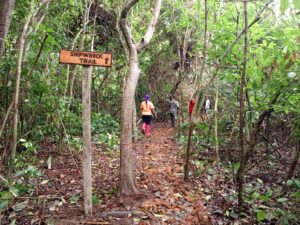
Overall Benefits of Touristic Trails
Trails encompass a wide spectrum of marked paths, catering to various forms of recreational activities like walking, biking, and hiking. They can span from short community connectors to extensive journeys like the Lewis and Clark National Historic Trail, a 4,900-mile route tracing the footsteps of pioneers. Unlike other forms of tourism, trail tourism, known as “slow tourism,” encourages a direct engagement with the land, promoting a deeper connection with nature and local communities. Such trails offer significant environmental advantages by reducing pollution, erosion, and flooding, while promoting public health. Economically, trails inject funds into local economies through tourism, benefitting businesses, boosting property values, and creating jobs. Notable examples like the Camino de Santiago demonstrate the economic vitality and cultural preservation fostered by pilgrimage routes. The Lewis and Clark National Trail showcases how trail networks can connect communities and businesses, while also highlighting the stories of diverse voices, including indigenous perspectives. Even in Liberia, rainforest trail development offers a promising path to ecotourism, biodiversity protection, and environmental education. Solimar International’s efforts in Liberia’s Gola National Forest and Lake Piso reveal how trail networks can revitalize communities, protect ecosystems, and drive sustainable economic growth. Through their multifaceted benefits, trails stand as valuable assets that bridge nature, culture, economy, and community.
Keep up with Solimar’s work on trails such as the Lewis and Clark National Historic Trail and the Liberia Project – don’t forget to like us on Facebook and LinkedIn!
Blog by Ethan Hamlin and Matteo Coleta
